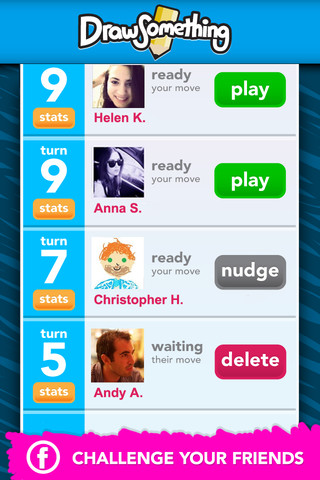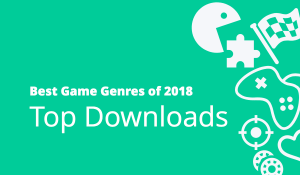Mobile Session Design: Player Commitment
Why does a player want to come back to your game?
As a mobile game designer, you need to come up with a very compelling answer. Creating a polished, addictive game is half the battle. You need to find ways to nudge your players to come back to the game after they have left. Designing your game around pulling your player back in is the critical battle on mobile.
So what games are good at pulling players back in? Not necessarily the games with the best mechanics.
Looking at the top ranks on the AppStore, it is inevitable as a traditional game designer that you will look at some of these games and be baffled at how they could possibly be so addicting and have so much traction. The player enters the game and collects simple rewards (which require no strategic input from the player). These actions levels up the player using archaic RPG mechanics, then the player quickly leaves. While it is easy to point and spot flaws, it is also important to recognize why these mechanics work on mobile. Specifically, these games allow the player to enter and exit the game very quickly. The player comes in, knows exactly what they need to do, quickly makes their strategic moves, and then leave to carry on with their daily lives. The game is adaptive to the player’s life, it allows them to complete a clear bite-sized section of gameplay within 30 seconds, and is clearly built with mobile in mind.
Yet despite how little time they are actually in the game, they are immersed in this environment while they are not even playing. While outside of the game, players commonly think of what they are going to do next, they plan out their long term goals, and rethink their strategy of their previous sessions. Even when the progression is fairly linear (for example, Cookie Clicker). This is an incredibly powerful technique that is a driving force of why these mobile games are so addicting. This is partially why FarmVille got its edge when it did, and why mobile games with similar mechanics continue to gain traction on Mobile platforms. So as a game designer, before you look to point flaws and discredit games that use these mechanics, challenge yourself to create a deep, immersive game mechanic which allows the player to obsess while they are away.
There are 3 strategies that help drive re-engagement on mobile :
- Building player commitments
- Always have reasons to return
- Flexible session design
Today I am only going to write about one: Player Commitments. The remaining two will follow in future blog posts.
Building Player Commitments
The most basic and impactful way to drive players to return after they have left your game is to push players to make a commitment to return before they leave the app.
The most well understood example of this is the farming crop mechanic. A player “plants” an object in your game, and chooses which contract they want: do they come back in 5 minutes for a little bit of crop, or in 4 hours for a large harvest. Regardless of which length they choose, they’ve made a commitment to return to the game.
Many social game designers have different takes on this method. It has been overused by farming style games, but it should not be underestimated for its value. If you manage to make the player care about coming back, this will drive re-engagement.
It is important to understand the difference between Opt-In commitments and opt-out commitments. A player should be able to select and commit to a selection of times to come back. They should not be forced into a specific time. There is distinct reasoning in allowing players to schedule their game around their life. If you take that control away from the player, then the mechanic fails to be a commitment, it just becomes an annoyance.
Adding Timers
If you use time-based commitments (or timers in general) it is important that you set the expectations correctly from the beginning. Timers should be only included in actions that are innately expected by the user. Repair times, travel times, investigation times are good examples of this. In reality, these actions take time, so of course the game will add a timer this.

Hay Day builds on the commitment systems of most farming games. Hay Day uses timers to pace the resource management and build interesting decisions. Timers are expected here — players understand that food takes time to produce, and the more complex the crafting is, the longer the time it takes.
Also ensure that timers are consistent — if starting an action sometimes has a timer and sometimes does not, this can really set users off.
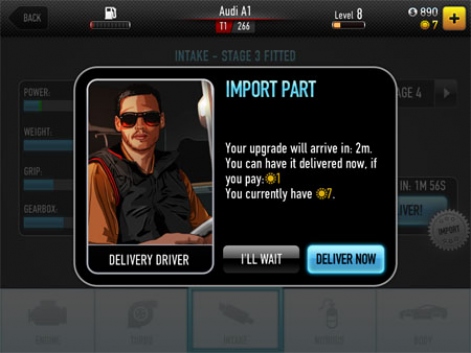
It was a bit odd that CSR had Import parts and non-import parts. In my opinion this mechanic would have been stronger if it was always imported, or the installation was always a set amount of time. Instead of players feeling like upgrades were randomly assigned import or non-import.
Lastly timers should not be added for every action of the game — namely it should only be added to areas that build excitement and anticipation. Adding timers to the end of an action loop is best. For example a player collects resources and then triggers building a structure. Or in Dragonvale when a player ends their loop with breeding two dragons :
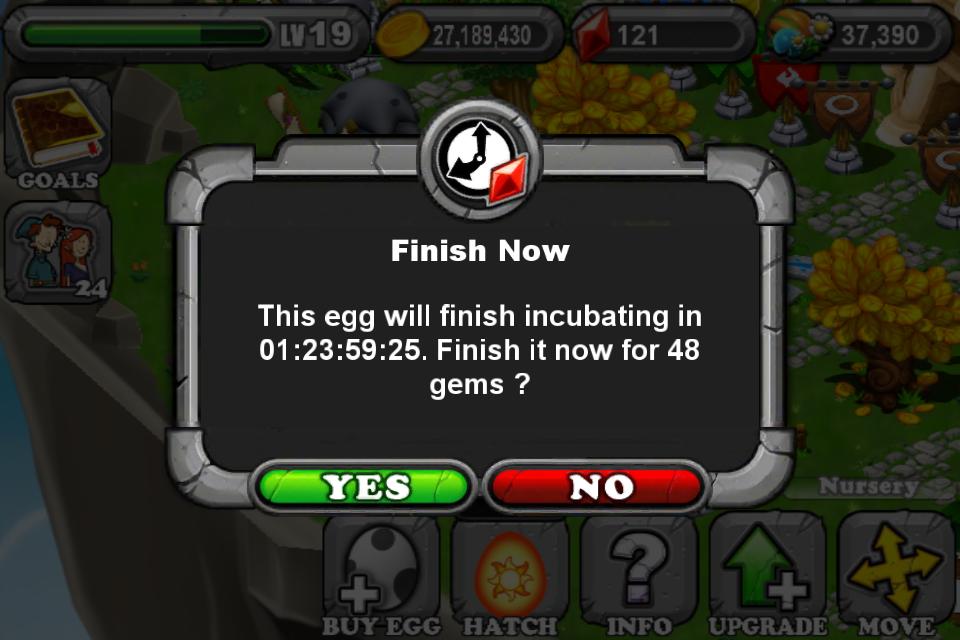
Dragonvale’s egg timer is adjusted based on the quality of the dragon that will come out. This builds anticipation.
Dragonvale does this superbly with the breeding timer. Engaged players know that long timers are exciting! The longer the timer, the better the dragon. This makes the timers feel great, and is added in an area that boosts the anticipation — finding out what’s in the egg.
Social Commitments
Timers are not the only way to pull players back. The current market is becoming more and more apprehensive about this type of mechanic. Instead of using time-based commitments, Social commitment is another angle that many games use.
Building a mechanic that revolves around active players collaborating, competing and communicating with each other can drive re-engagement.
Asynchronous Multiplayer
Asynchronous multiplayer is best found in games like Words with Friends, Draw Something and Tap Sports Baseball. They are games that revolve around social interactions between players. Each player makes a move in the game, then waits on their friend to make the next move. This has huge benefits for retention and virality. Players are prodding their friends in real life and through mobile push notifications to continue playing. Each time the player returns they have a set of games, ready to play.

The new words with friends adds a bit of “Tinder” to the app. Players are encouraged to play with random players to build social commitments.
The downside is that you physically can not play this mode unless you have friends that also own the game. This is the reason why these games are predominantly free, and also why they commonly take a long time to take off. The game only gets popular when a lot of players are playing it around the same time. Tap Sports and the New Words with friends have added new ways to start interacting with random strangers in the game. Not as engaging as playing with your real-life friends, but still better than playing with no one.
Challenges and Gifts
Depending on the nature of your game, a similar social connection to asynchronous multiplayer is the idea of challenges or gifts.
Gifts, like being able to send rewards to other players, is an easy way for players to push each other to play. This is not nearly as powerful as asynchronous multiplayer, but it does show some “social proof” that others are playing the game. The major benefit on mobile is that it can send a message to the other player. Popping up on their screen to rejoin the game.
Challenges can also be implemented as a “competitive gift”. Essentially players challenge another player to beat their score. This is a great way to push high score mechanics to be a bit more social. Players compete in one-time challenges and aim to defeat their friends as often as they can. A great idea is to incentivize this. Blend a bit more of a “gift” into the idea. So actually push players to challenge each other, and receive a reward regardless of winning or losing. This way players will push each other to play for quicker access to the rewards.
Social Leaderboards
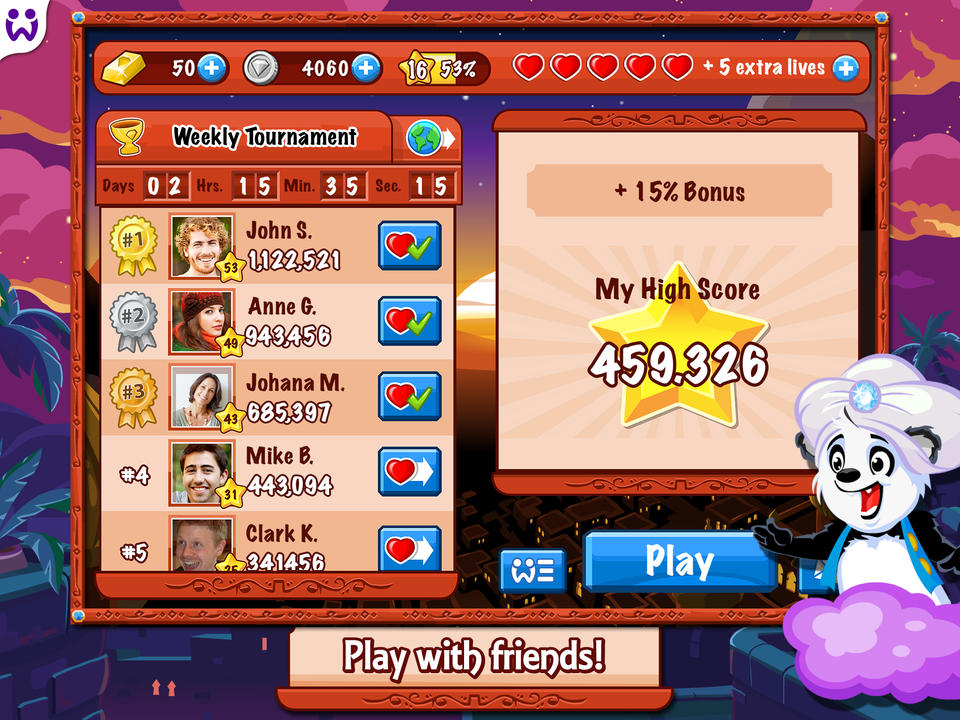
Wooga’s Diamond Dash is an example of what you can do with simple social game design. A social leaderboard engages players and creates commitments. Players want to beat their friends!
Leaderboards are not a new concept. It is basically a must-have with any standard game. Most players do not pay attention to them.
But that is only if you chose it not to be their focus.
Social Leaderboards can really be used as a mechanic to pull players back in.
If your game revolves around a central leaderboard, then you can use social notifications to make players very protective of their rank. When Player A beats Player B, make sure Player A can send B a nasty note, saying how terrible they are at the game. Make sure Player B can receive that note on their device, they will immediately come back into the game and play until they can push themselves back up the leaderboard. This can be a hugely compelling mechanic if built right. This focuses on more engaged users, and more casual audiences may be turned away if this is completely the focus.
One key issue happens when a leaderboard has no expiry. A player reaches an amazing score one week, but then never has to return to the game ever again since no one can beat them. It is far better to make your leaderboards expire, so that the winners have to return to claim their crow. A weekly “tournament” leaderboard is a great way for a player to be engaged on a real time basis.
Overall there are many more ways to build player commitments. Here I’ve spoken about two types that are common in games: Time based commitments and Social based commitments.
Regardless of how you design and what you choose, be sure to ask yourself during play testing:
Is there a compelling reason for our players to return to the game in the future?
Have players made a commitment to the game before leaving to encourage them to return?
In my next post I’ll discuss more “implicit” features that can drive re-engagement. It doesn’t always have to be about Timers or Social features. Looking at the most popular applications like Facebook and Twitter will give you a strong idea about how to drive players to want to return to your game multiple times per day.




